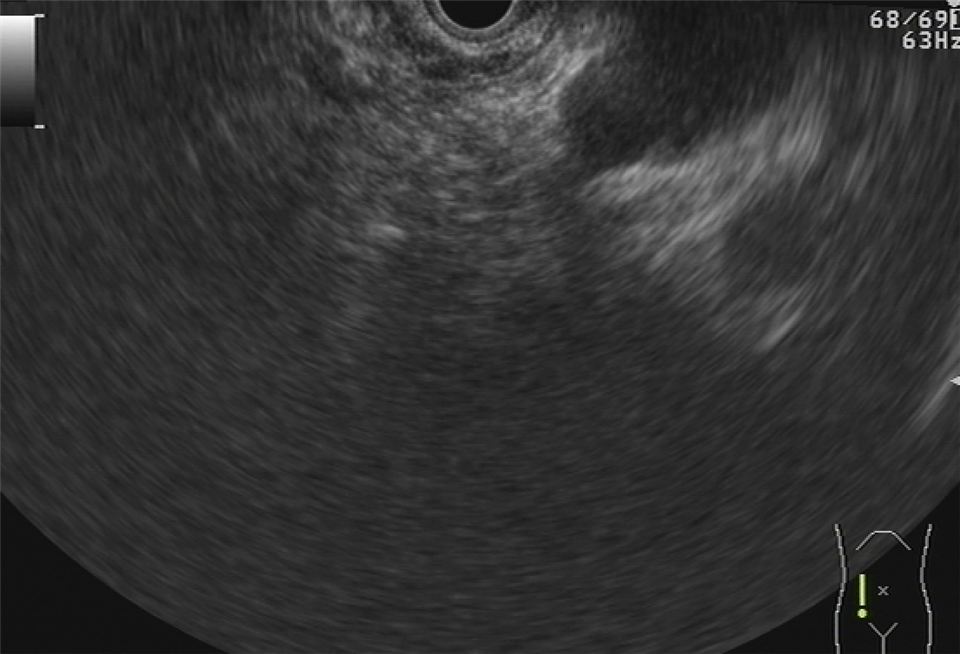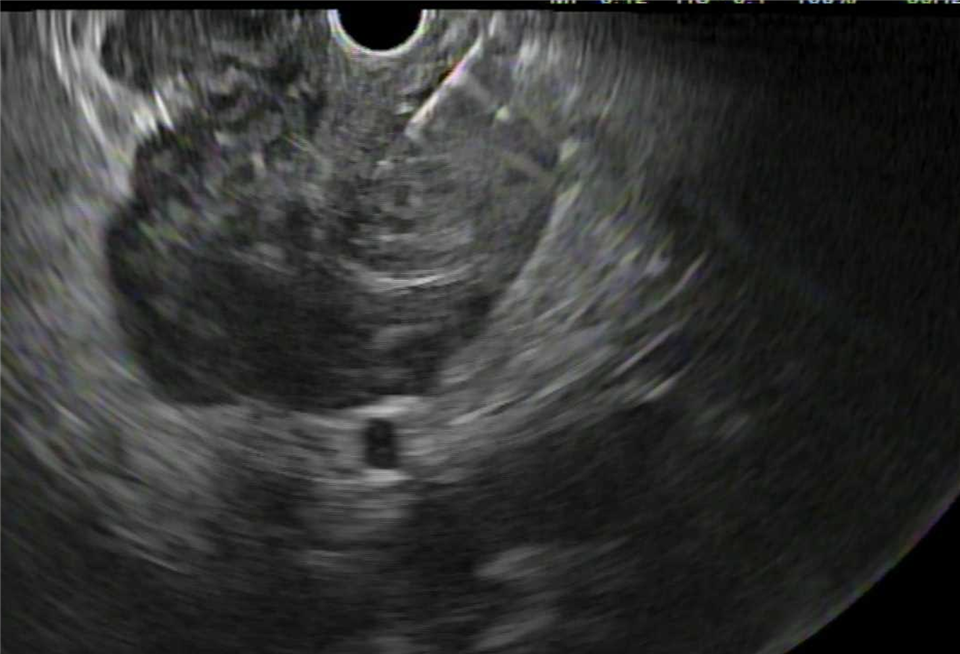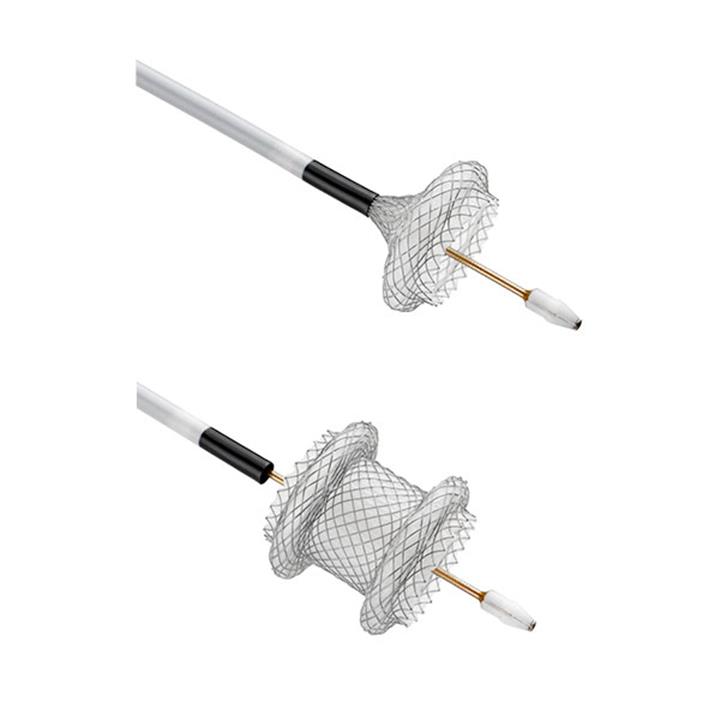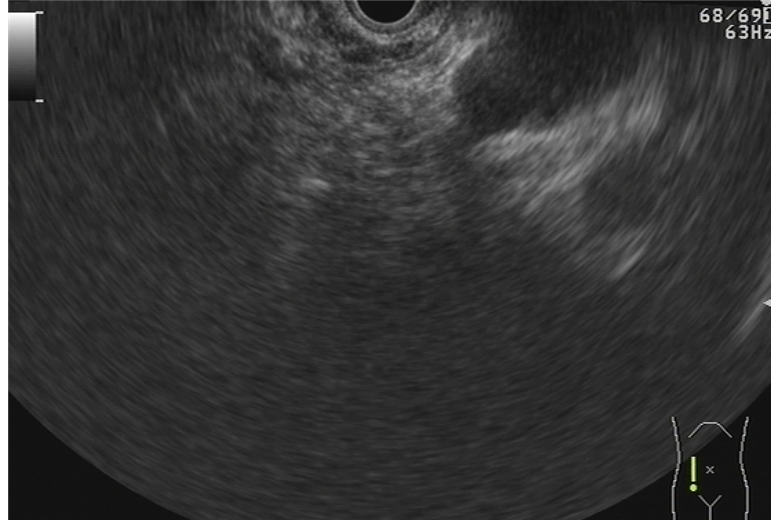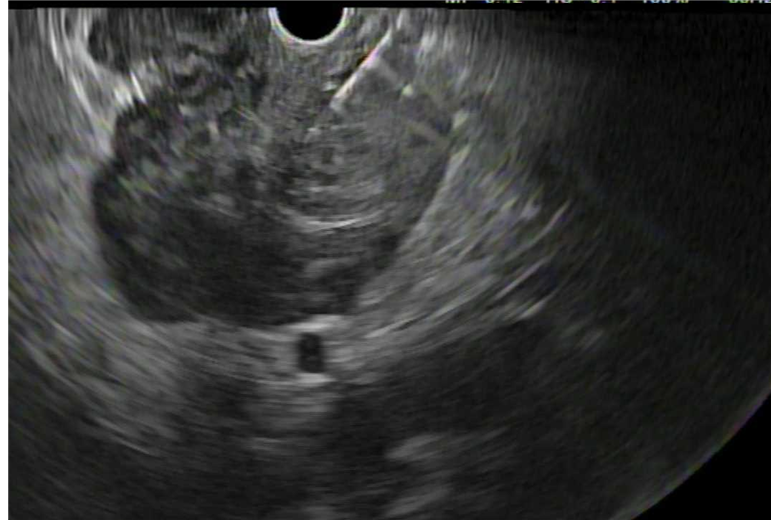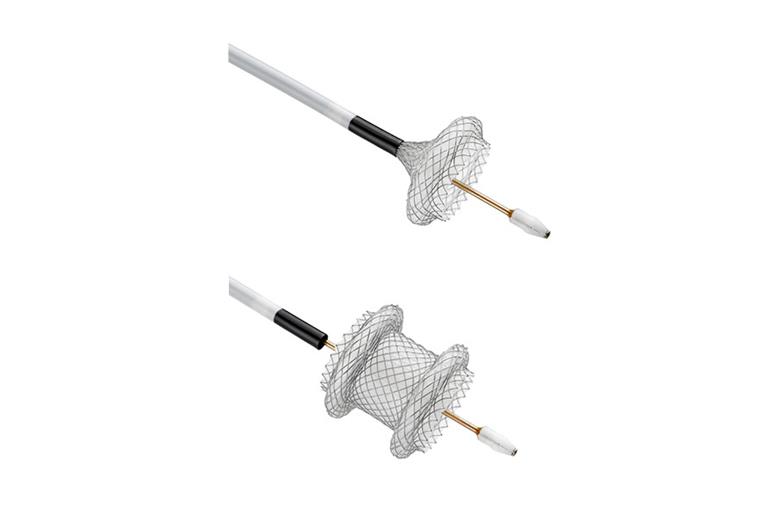31 Μαϊ 2023 / Basic EUS information for patients
Endoscopic ultrasound or EUS, is an interventional endoscopic procedure that is performed under sedation and resembles a gastroscopy It is always done in a hospital setting and the procedure usually lasts longer than a regular upper endoscopy.
Endoscopic ultrasound with or without biopsy is used to investigate lesions of the esophagus, mediastinum, lymph nodes, subepithelial or submucosal lesions of the esophagus, stomach and duodenum, solid lesions and cysts of the pancreas (chronic pancreatitis, pancreatic cancer, neuroendocrine tumors, IPMN, benign cysts, etc.), lesions of the bile duct and liver, such as cholangiocarcinoma and hepatocellular carcinoma. EUS also plays a key role in the staging of esophageal, gastric and pancreatic cancer, as it allows us to determine in great detail the size of the tumor, wall involvement and possible involvement of local lymph nodes.
Figure 1. Image of chronic pancreatitis with significant dilatation of the pancreatic duct
Ultrasound-guided fine-needle aspiration (EUS-FNA) and fine-needle biopsy (EUS-FNB) have become widely accepted procedures for the diagnosis and staging of digestive system lesions.
Figure 2. FNA biopsy of pancreatic lesion
Continuous improvements in endoscopic ultrasound technology aims to improve its diagnostic accuracy and sensitivity and at the same time reduce adverse effects associated with its use.
Today, with the help of endoscopic ultrasound, we can distinguish whether some digestive lesions have benign or malignant characteristics, if surgery is required or any other specific oncological specific treatment, or if they are completely benign and we can simply monitor them at regular time intervals.
Also, with the use of endoscopic ultrasound we can treat pancreatic pseudocysts. This is done with a new and minimally invasive method, without surgery and without need for percutaneous drains. The operation is done under sedation, just like a gastroscopy, and involves the EUS-guided endoscopic placement of a special metal stent, which drains the cyst inside the stomach, which, after a few days and after the cyst has disappeared, can be removed endoscopically.
Figure 3. AXIOS stent (Boston Scientific), a special stent for endoscopic pancreatic pseudocyst drainage
In the near future procedures entered around the use of endoscopic ultrasound technology will find application in a multitude of other endoscopic operations, e.g. endoscopic drainage of the gallbladder in inoperable patients.


